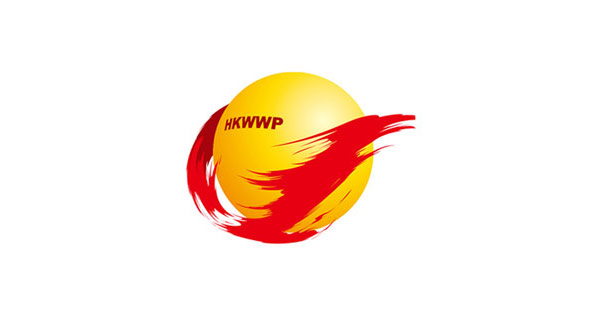 ■專家建議香港提升檢測能力。 資料圖片
■專家建議香港提升檢測能力。 資料圖片【原文】全球新冠疫情仍未有止息跡象,累計確診逾750萬例,美洲及南亞國家成為新的重災區,本港沙田祿泉樓群組先後有9人確診亦再次敲響了本港防疫抗疫警鐘。多位專家均認為,本港病毒檢測篩查能力不足,成為做好本地防控工作和對外逐步恢復往來的瓶頸。因此當務之急是要提升檢測能力,才能最大限度做好疫情防控和恢復經濟的工作。
本港疫情雖然初步受控,但近月接連發生零星的本地感染個案,沙田瀝源邨祿泉樓先後9人確診,傳播感染途徑不明。這顯示,無論政府還是社會都不能對疫情防控盲目樂觀,寧願把情況想像得壞一點,也要防微杜漸。由於新冠病毒相當狡猾而且傳播能力強,部分患者病徵輕微容易成為隱形傳播者,因此唯一有效切斷傳播鏈的方法就是加大檢測篩查力度。
香港目前日均檢測能力只有5,000個左右,不要說與內地深圳等一線城市相比,就算是人口只有本港十分之一的澳門,每日的檢測能力也達6,000個,約佔澳門總人口的1%,比疫情初期提升了10倍。檢測能力不足,造成一旦出現病例無法在短時間內篩查周邊人口,導致隱形傳播鏈可能繼續傳播,是造成疫情難以「斷尾」的主要原因。港大微生物學系講座教授袁國勇上月就建議香港將檢測能力提升至每日7,000人,但當局預計最快7月才能達到。檢測能力提升的進度慢,不僅成為本地疫情防控的短板,也限制了取消本地社交限制措施的進度,窒礙了本港與廣東省、澳門等周邊地區逐步放寬通關限制的工作。
由2月開始對內地來港人士實施強制檢疫措施算起,本港控關已進入第五個月,旅遊、酒店和零售業界受到嚴重打擊。面對內地和周邊部分國家地區疫情基本受控,在各自有充分檢測的前提下逐漸恢復人員往來,推行「旅遊氣泡」政策就是大勢所趨。這就對本港檢測能力提出更高的要求。對於周邊地區而言,檢測能力是恢復人員往來的前提條件,只有檢測多了,其他地方才能對我們有信心。
事實上,粵港澳三地近月一直籌劃推出互認健康碼,在有檢測結果的情況下逐步恢復通關,澳門早前已率先與珠海市實現部分人員豁免檢疫,香港與深圳兩地的互認措施遲遲未能落地,檢測能力是瓶頸之一。如果本地檢測能力持續偏低,既要滿足本地疫情防控需要,又要滿足跨境司機、跨境學童和商務人士等剛性檢測需求,基本沒有空間再為其他人士做檢測。
參考澳門的做法,澳門衞生局上月起與檢測機構合作,迅速提升了檢測能力,為常態化疫情防控打下良好的基礎。特區政府只要與本地私家醫生和私營檢測機構合作,以當前的試劑供應,不難在短時間內快速提升檢測能力。特區政府應雷厲風行落實提升檢測能力的措施,滿足全社會對疫情防控和經濟恢復的基本訴求。 (摘錄自香港《文匯報》社評2020-6-15)
Expanding coronavirus testing capacity should be a top priority
【譯文】With over 7.5 million people having been infected across the world, the coronavirus pandemic still shows no signs of abating. As new cases ramp up quickly in countries in the Americas and South Asia, a new cluster of nine local cases from the Luk Chuen House in Shatin sounds the alarm for the local Covid-19 awareness. Experts believe that the testing capacity for the coronavirus in Hong Kong is insufficient, and that has become a bottleneck for both maintaining a sound prevention and control regime and the gradual resumption of outside connections. Therefore, it is a top priority of Hong Kong to boost the testing capacity if we were to do the utmost to stop the pandemic and start working on economic recovery.
Although the Covid-19 outbreak in Hong Kong is now under initial control, there have been sporadic local infections in recent months, with nine new cases from unknown sources being found in Luk Chuen House of Shatin's Lek Yuen estate. This shows that neither the government nor the society can afford to be overly optimistic about the pandemic.
We should rather prepare for the worst and nip the problem in the bud. As the novel coronavirus is a cunning disease and has a strong ability to transmit from human to human, some patients that have mild symptoms are very likely to become "invisible carriers". Therefore, the only effective way to cut off the transmission chain is to step up efforts in testing.
The current testing capacity of Hong Kong is only around 5,000 per day. Even Macau, a city with only one-tenth of the population of Hong Kong, has a daily testing capacity of 6,000. That figure is a tenfold increase when compared to earlier months of the pandemic, and is roughly 1 per cent of the total population of Macau. Insufficient testing capabilities make it impossible to screen the nearby population in a short period once a case is found, which is mainly why invisible transmission chains may continue. Professor Yuen Kwok-yung, an expert microbiologist at the University of Hong Kong, suggested last month that Hong Kong should increase its testing capacity to 7,000 per day. According to the authorities, however, that number will not be achieved until July at the soonest. The slow progress in the expansion of testing capacity has not only become a shortcoming in the local pandemic control effort, but also obstructed the easing of local social restrictions and cross-border travel restrictions with Guangdong and Macau.
It has been the fifth month since compulsory quarantine measures on inbound travellers from Mailand China are in place, and the tourism, hotel and retail industries have sustained a massive blow. As outbreaks in mainland China and other surrounding countries are coming under initial control, personnel exchanges should gradually be restored given sufficient visitor screening, and forming "tourism bubbles" will be the general trend. Hong Kong will need to boost its testing capacity even further in order to catch up. For the surrounding regions, sufficient testing capacity will be a prerequisite for the resumption of personnel exchanges. Only with an adequate testing capacity can other places have confidence in Hong Kong.
In recent months, Guangdong, Hong Kong and Macau authorities have been planning to launch mutually recognised health codes to gradually lift travel bans. Macau and Zhuhai have already exempted quarantine measures for certain approved personnel. The same has not been happening between Hong Kong and Shenzhen partially because of Hong Kong's insufficient testing capacity. If the local testing capacity continues to remain at the current level, the constant testing needs from local disease control and inbound travellers such as cross-border drivers, cross-border students and business travellers will already use up all available resources.
Last month, health authorities in Macau began to cooperate with the private sector and rapidly improved Macau's testing capabilities. The move laid a strong foundation for the preparation of a prolonged pandemic prevention and control effort. If the Hong Kong authorities are willing to cooperate with local doctors and laboratories from the private sector, the same could be achieved in Hong Kong given the current supply situation of testing kits. The government should swiftly expand the local testing capacity, so as to meet the society's demands for pandemic control and economic recovery.■Jeffrey Tse
Exercise
1. 個人防護裝備
2. 隔離檢疫
3. 無症狀
4. 感染群組
5. 超級傳播者
Answer
1. personal protective equipment (PPE)
2. quarantine
3. asymptomatic
4. cluster
5. super-spreader

